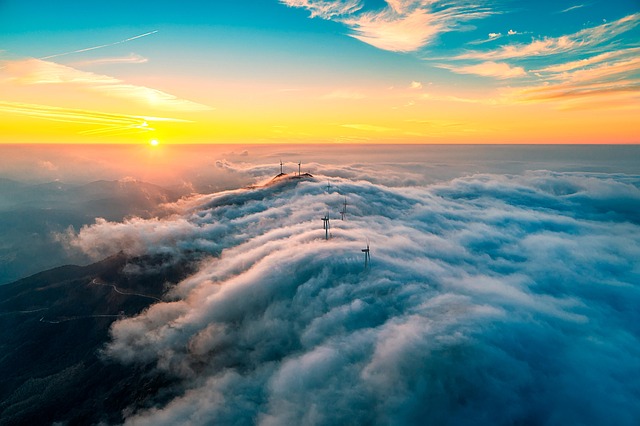How Renewable Energy Is Changing the World in 2025

Sunlight, wind, and water aren’t just fiction anymore. They’re powering homes, factories, and entire economies. In 2025, renewable energy isn’t some distant thing anymore; it’s the main act. This matters to you, to your bills, and to a cleaner future.
In 2025, wind and solar together produced more electricity than coal in the United States for the first time. It’s the result of years of falling costs, faster deployment, and smarter policy nudges. We’re watching an energy map redraw itself fast.
One day, coal is the old reliable; the next, sunlight and breeze carry more of the load. But underneath that headline is a more interesting truth: renewables scale differently.
Why 2025 feels different
Three converging forces made this year a turning point:
- Technology at scale: Solar PV and wind costs have tumbled a lot faster than experts predicted a decade ago. Batteries are better and cheaper. Project design, manufacturing, and construction learned speed. The result? More capacity, sooner.
- Money—not just government money: Private investment also wants good returns. Institutional funds, corporate buyers, and public banks are putting in a lot of money and when capital flows, projects sprout. The global market for green energy is measured in trillions now.
- Policy catching up: Where rules make it easier to connect to grids, permit projects faster, or offer incentives, deployment soars. Where rules lag or local grid upgrades are missing, projects stall. The story of 2025 is uneven progress—fast in some places, behind in others.
What’s changing for everyday Americans
You don’t need to be a developer to feel the difference.
- Lower electricity costs: As more wind and solar enter the grid, wholesale prices can dip during sunny or windy stretches. This can mean savings for consumers—if the benefits make it through policy and market structures to your bill.
- More options for homeowners. Roof solar, community solar projects, and better battery packages mean homes can generate, store, and even sell power back. You can be less hostage to outages. You can be more energy independent.
- New jobs in your town. The renewable sector creates jobs in manufacturing, construction, maintenance, and project development. Different skills, new training programs, and apprenticeships become a necessity. Not just rooftop installers, project planners, grid integrators, and battery technicians.
The grid:
Here’s where things get fascinating
Renewables are great at generating power. But that power can be variable. The sun sets. Wind lulls. For the grid to be reliable, we need smarter balancing: more transmission lines, better forecasting, flexible demand, and, of course, batteries that store excess power for later.
The good news? Innovation isn’t waiting. Utilities and grid operators are experimenting with batteries, demand response, and transmission upgrades. Still, bottlenecks exist, permitting, supply chain issues, and financing for the “behind-the-scenes” infrastructure that is essential.
The International Energy Agency(IEA) shows renewables’ share of global electricity rising and forecasts strong deployment through 2030—while flagging grid integration and supply chain vulnerabilities as core challenges. In many countries, renewables will grow faster between 2025 and 2030 than in the prior five years.
The social side:
Large projects can bring jobs and tax revenue. They can also raise local concerns: land use, aesthetics, or worries about noisy turbines. Community-led renewables like community solar offer a compromise. They let neighborhoods own part of their power and keep benefits local.
And yes: equity matters. Low-income communities have historically been last to benefit from clean energy. That’s changing in some places where policy intentionally directs funds and access to underserved areas. But there’s more work to do. The transition must be fair, not just fast.
Climate: why this actually matters
Simple truth: more renewable power means fewer carbon emissions from electricity. Electrifying things like cars, heat pumps, and the emissions reductions multiply. The IPCC and other assessments keep reminding us to limit the worst damage from climate change, we need rapid, deep cuts in emissions. Renewables are a core tool in that effort. However, clean electricity alone won’t solve everything. We’ll need efficiency, smarter industry practices, and changes across transportation and buildings. Renewable energy is a star player—but it’s part of an ensemble.
What to watch in the next 12–24 months
To keep tabs on the trends, look out for:
- Battery capacity and costs. Lower cost batteries = smoother grids = more renewables.
- Grid upgrades and transmission buildout. Where wires get built, renewables flourish.
- Policy shifts and permitting reforms. Faster approvals = faster deployment.
- Corporate and financial commitments. Big buyers locking into renewable contracts accelerate projects.
- Local projects and community ownership models. They’ll shape public acceptance and distribution of benefits.
Bottom line
A kid flips a switch in a school lit by rooftop panels. The lights come on. Computers boot. A classroom that used to lose power during storms keeps teaching. That’s the level where these big trends become real change.
Renewable energy in 2025 isn’t just data and policy. It’s roofs, jobs, quieter towns (sometimes!), and the comfort of knowing we can choose differently.




